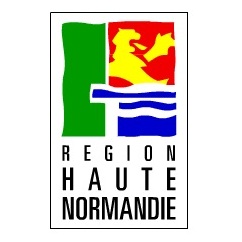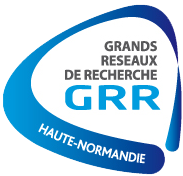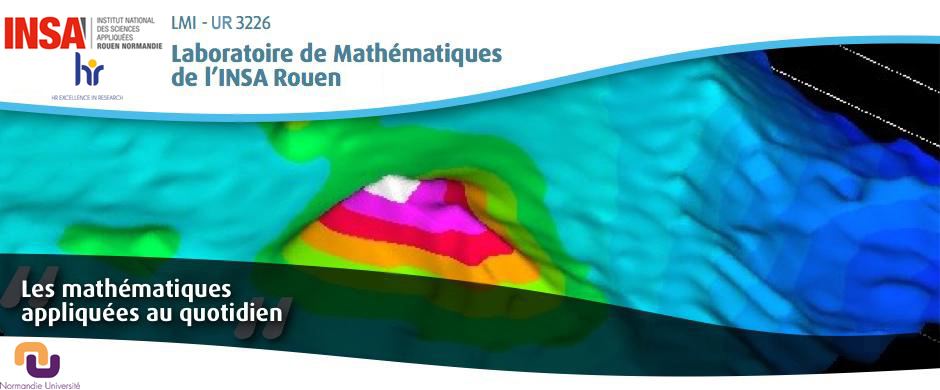Workshop "Modelling and Numerical Simulation/HPC"
@ CORIA [Numerical simulation and modeling of turbulent combustion]
(dans le cadre des Projets @Olin du Labex AMIES et M2NUM du GRR LMN
et du projet de Maison du Numérique de Normandie)



Jeudi 19 Février 2015 - Rouen (Campus du Madrillet) - Amphi @ CORIA (St Etienne du Rouvray)
Chairwoman : Carole Le Guyader
14h15 : Violaine Louvet (ICJ et CNRS, Lyon)
14h45 : Vincent Moureau (CNRS et Coria, Rouen)
15h15 - 15h45 : pause
15h45 : Théophile Chaumont-Frelet (INRIA Bordeaux Sud Ouest et LMI, Rouen)
16h15 : Dimitri Komatitsch (CNRS et LMA, Aix Marseille)
Titles and abstracts / Titres et résumés des présentations:
- Vincent Moureau (CNRS et Coria, Rouen): Load balancing and mesh adaptation techniques for the simulation of flame propagation on unstructured meshes
The modeling of premixed combustion is a computational challenge because complex diffusion and reaction processes often occur in very thin layers. The interaction of these processes with turbulence determines the main properties of the flame brush, such as its burning velocity or its thickness. The mesh resolution in the mixing and reaction zones is therefore of tremendous importance to reduce the turbulent combustion modeling effort. In the framework of finite-rate chemistry modeling at low-Mach number, mesh adaptation has to be supplemented by operator splitting and stiff integration algorithms in order to alleviate the time step restriction due to the chemical time scales. These algorithms introduce a large load unbalance when running on massively parallel super-computers. However, task sharing and dynamic scheduling approaches enable to recover a linear scaling on a large number of cores. All these techniques have been implemented in the YALES2 CFD solver, developed at CORIA and used in several laboratories of the scientific group SUCCESS (http://success.coria-cfd.fr), and are demonstrated in the simulation of flame propagation on unstructured meshes.
- Théophile Chaumont-Frelet (INRIA Bordeaux Sud Ouest et LMI, Rouen): Analysis of the Pollution Effect in Finite Element Discretization of Highly Heterogeneous Helmholtz Problems
Time harmonic waves, modeled by the Helmholtz equation, are used in several engineering processes including, for instance, radar and seismic imaging. In the context of seismic imaging, waves propagate through the earth, which can be represented (in the simplest case) as an heterogeneous acoustic medium. Depending on the application, the
simulation of high-frequency waves can be required, especially for high-resolution imaging. Numerical approximation of high-frequency waves is a challenging problem, even in homogeneous media. Indeed, numerical approximations suffer from the so-called pollution effect: if the number of discretization points per wave length is kept constant, the numerical solution diverges from the best approximation the scheme is capable of when the frequency is increasing. As a result, drastic conditions are imposed on the mesh at high frequency: the number of points per wave length must be increased when the frequency increases. In the case of homogeneous media, it has been shown (and observed numerically) that high order methods are able to reduce the pollution effect, making them cheaper than low order methods to solve for high-frequency. However, the application of high order methods to highly heterogeneous media is not trivial. It turns out that high order methods are build on coarser meshes, so that they do not capture fine scale variations of the propagation medium if the parameters are taken to be constant in each cell. The aim of this work is the study of a multiscale medium approximation strategy for high order methods. We propose a theoretical analysis of the pollution effect in the context of multiscale medium approximation when using polynomial shape functions and we present numerical experiments (including geophysical benchmarks).
- Dimitri Komatitsch (CNRS et LMA, Aix Marseille): Modélisation de formes d'onde complètes dans le domaine temporel en acoustique sous marine : aller au-delà des approximations usuelles pour la surveillance du milieu marin et de l'environnement [Dimitri Komatitsch, Paul Cristini and Alexis Bottero]
Accurate numerical simulation of acoustic wave propagation at large propagation distances is important in the context of acoustic wave monitoring. Classical techniques often resort to widely-used approaches such as the parabolic approximation, which are very efficient because they result in inexpensive or moderately expensive calculations. However, when very accurate results are needed limitations arise from the underlying physical approximations made.
In this work we will therefore describe time-domain full wave SOFAR channel numerical simulations based on the spectral-element method and that go beyond these usual approximations (however at larger cost). We will describe a 2.5D and then a 3D time-domain Legendre spectral element method (SEM) for full-wave simulation of regional ocean acoustic wave propagation, taking into account the shear modulus contribution in ocean sediments. The technique can handle range-dependent and/or depth-dependent wave speed and density, as well as steep sediment topography. It exhibits very good accuracy properties and is also very well suited to calculation on large clusters of computers based on parallel programming.
In order to save computational time, in the fluid parts of the model we formulate our SEM based on the scalar second-order displacement potential form implemented in the framework of an explicit time scheme. For semi-infinite domain truncation i.e. for absorbing conditions we resort to Perfectly Matched Layers (PMLs). - Violaine Louvet (ICJ et CNRS, Lyon): Estimation de paramètres pour des modèles de croissance tumorale
La modélisation de la croissance de certaines tumeurs cérébrales conduit à des systèmes d'EDP de type réaction-diffusion potentiellement très coûteux à évaluer. La nécessité d'identifier les paramètres du modèle pour chacun des patients suivis rend cette contrainte rédhibitoire. En outre, les données disponibles sont très peu nombreuses. Ces spécificités nous ont amenés à développer une méthodologie basée sur des algorithmes à effets mixtes avec une résolution de type SAEM couplée à des stratégies de pré-calcul nous permettant d'espérer des coûts calcul raisonnables pour l'identification des paramètres des modèles étudiés.
Vendredi 20 Février 2015 - Rouen (Campus du Madrillet) - LMI 201
9h-12h : Approximation d'un champ de vent : modélisation et simulation
[E@lin: P. Alexandre (Montpellier), D. Apprato (Biarritz), B. Jobard (Pau)]
Org. : C. Gout & V. Moureau
This workshop is supported by M2NUM project (GRR LMN - Haute Normandie) and e@lin project (Labex AMIES)
En lien avec les thématiques des GT SMAI-SIGMA et SMAI-MAIRCI.


